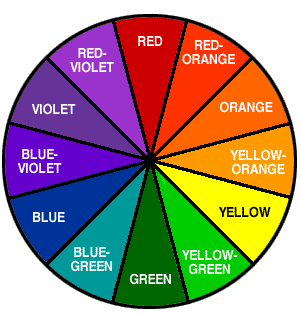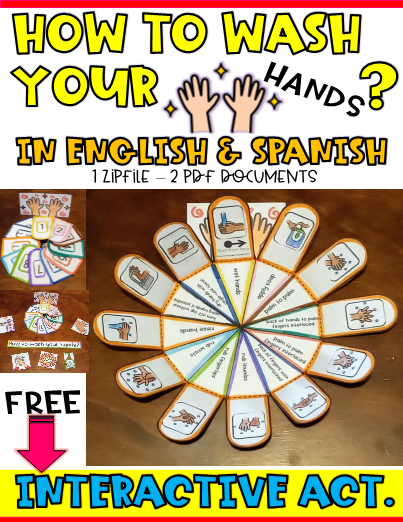Is too much Screen Time Dangerous?
No matter how much you may try to avoid it, screens are an integral part of everyone’s lives and they are inescapable. With the increased use of electronics also comes increased concerns about how they affect us and our children. Many of us grew up with the old adage of “getting square eyes” or "you'll go blind" when we sat too close to the TV, but what are the real-life effects of too much screen time? Read on to see how too much screen time affects our eye health.
This post contains Amazon affiliate links.
Screen Effects on your vision
The rise in popularity of blue light filtering glasses has made us all think about how brightly lit screens might negatively impact our vision. If you work on a computer all day then you have probably felt some of these effects of too much screen time such as headaches and dry eyes, but you can also start to suffer from eye strain and even blurred vision. To combat these problems, you can use the aforementioned blue light filtering glasses, always work in good light, and avoid sitting in the dark staring at a screen. The number one rule for fighting computer vision syndrome is the 20-20-20 rule – every 20 minutes you should take a break and stare at an object that is about 20 feet away for 20 seconds. This helps give your eyes a break, and if you keep it up, you should notice a significant difference in your level of eye comfort.
Eye Strain Sleeping problems
We are all guilty of scrolling through our phones right before bed but when we do this the light emitted from the device can interfere with your brain's sleep cycle and prevent you from getting a good night’s sleep. The bright blue light that comes from phones and tablets disrupts your natural production of melatonin (the hormone that makes you sleepy.) To keep this disruption to a minimum, you should ban phones from the bedroom and avoid screens for at least an hour before you plan on getting into bed.
Chronic pain
Aside from the effect of the brightly lit screens, we can also see electronic devices affecting our posture and causing neck, shoulder, and back pain. If you are sitting at a computer or laptop for long periods of time, then you will often find yourself hunching over or gradually starting to slump. Take regular breaks from sitting down to walk around the room, stand up or stretch your body, and make sure your chair has sufficient back support. Check out the correct seating posture for office work and make sure you follow the guide on how to sit.
Limit screen time
Set an example – remember that you are an example for your children, so avoid that absentminded scrolling on your phone when your children are around.
Set aside time to unplug – choose a time when the whole family has to unplug from their electronic device and spend quality time together without phones, tablets, or TVs.
Use parental controls – not only can parental controls block unwanted content, but you can also set daily screen time limits that lock your children out of apps once they have reached a set amount of time.
If you follow these simple tips, you can reduce the effects of too much screen time. Your eyes will thank you!
Recommended:
Pros and Cons of Ipads and Tablets in the Classroom
Fun Things to do at your Local Library
You can Eat Healthy in College
Basic Nutrition
The basic food groups are something everyone is aware of. This will help you determine the amount and types of food you should consume to stay healthy. Eating healthy can be challenging, however, the consequences of unhealthy eating may be slow to occur but devastating in the long run.
With issues like fatigue, depression, menstrual irregularities, gastrointestinal issues, and low immunity, “you truly become what you eat”.
Most people are familiar with the classical food pyramid, however, in 2014 this was replaced with the plate. This showcased not only the recommended nutritive foods you should consume but also gives an idea about portion size.
However, keep in mind that the portion sizes vary greatly depending on your age, gender, and physical activity. For example, a college athlete will need far more calories compared to a chemistry undergrad spending their days in the lab.
Recommended Daily Intake
Typically, a college student needs about 4-8 servings (3-5 for females) of carbs of which at least half should be whole grains. Protein intake of 45-55g per day is enough whereas curbing your dairy cravings to no more than three cups a day.
Vitamin and fiber-rich fruits and veggies, thankfully have no strict restrictions, but the recommended minimum for 2-3 cups of veggies and 2 cups of fruits daily. Always keep various types of brightly colored fruits and veggies in your routine, because all of these are packed with all the correct vitamins. Some of these include but are not limited to broccoli, carrots, spinach, oranges, kiwi, grapes, blueberries, strawberries, etc. (via HealthCanal.)
How Unhealthy Food choices Affects Us
College and caffeine are a tale as old as time. Deadlines, gruesome assignments, early morning lectures, or warm nights surrounded by friends, caffeine is a constant companion. However, constant caffeine intake is linked to insomnia, anxiety, poor concentration, and performance.
Instead, try to sleep at least 7 hours (get off your social media past midnight!). Limit those caffeine cups to 1-2 per day and try to keep those all-nighters, only occasionally in emergencies and spaced apart.
Even though this is akin to beating a dead horse, fats are deadly when eaten excessively, it is a major culprit for cardiac diseases and stroke. Nonetheless, cheat days are allowed and moderate intakes are encouraged.
Whole grains are the better choice when it comes to carbs. Excess sugar is converted to fat leading to weight gain and is a major risk factor for type 2 diabetes mellitus. Low-fiber refined sugar doesn’t trigger insulin which stores away the excess sugar, the pancreas is unable to deal with the sugar rush, hence you crave sugars only hours after that delicious pasta.
Salt and preservatives, rich processed meats, canned food, and packed meals are at risk of high blood pressure, heart disease, and some cancers.
Dining Hall Tips to
Planning is the best way to avoid giving in to your sugary urges. Browse through the dining halls menu online and decide your breakfast before going to bed, so you don’t buy meals with your craving eyes. Some college dining halls provide calorie counts for their meals.
Keep an apple or some granola bars to your snack on your midday cravings and avoid the vending machine. Many healthy lifestyle snack options, like nut butter, crunchy seaweed snacks, and protein bars.
Try to keep a protein source on your plate as well as a fresh item. Salads are a great option and mind you, there is way more to salads than just lettuce. Choose grilled instead of fried chicken. Replenish your plate with veggies and choose brown rice over white rice.
Desserts can be fruit instead of sweetened yogurt. Replace your sodas with freshly pressed juices and water. Try different items on the menu regularly instead of sticking to a single item. Avoid lingering in the dining hall for long, don’t use the hall for group studying and projects. This will distract you and tempt you to eat more than you need.
There are many ways to make small changes to your diet which will make a world of difference only if you put your mind to it.
Dorm Room Cooking
Many dorms may not have adequate facilities for cooking meals regularly. In such cases, stock up your pantry with items like fruits, dried fruits, bagged salad greens, can tuna, whole grains (oats), yogurt, and popcorn.
However, there are many ways to whip up easy meals for college students on the budget and drowning in deadlines. From baked salmon to chicken avocado, many easy weeknight dinners are great and take little time to make.
Microwave Meal
Microwave meals can also be healthy and quick to make. Scrambled eggs, lean cuisine, potatoes, can soup, single-serve quinoa, or brown rice cups can make simple, quick, and delicious meals. Top with seasoning and wash down with some freshly blended smoothies to keep you full for the day.
Eating Well on a Budget
Money is always tight for college students. The stress of college work can be so overwhelming that budgeting meals while keeping them healthy is the last thing on your mind. To help you here are some tricks to save your money and your health:
Make a shopping list for each meal during weekends and only stick to that.
Avoid buying expensive snacks like chocolates, chips, and packaged frozen meals too often.
Shop for fresh produce and meats on sale. Not expired.
Buy one or two expensive items like dressings and spices one at a time during each shopping trip to stock up.
Always keep cheese and salads, greens on hand to whip up a quick salad with any leftover meat or fish.
Stock your pantry with items that have long shelf lives to keep eating healthy.
Establish an Eating Habit
Two to three solid meals are a must, daily. Eat while you are slightly hungry and at specified times if possible with small intervals between snacks and meals.
You are likely to eat more while starving, but frequent small meals will keep you full and functioning. Even if you can’t sit to eat because of classes or sleep, keep a snack to munch on the go.
Portion Control
Easier said than done. We all know that all college students are perpetually hungry. However, try to eat slowly and wait 10-15 minutes before the next round. Drink plenty of water and eat on a small plate these are just some tips that can help you understand and implement portion control into a healthy diet plan.
Furthermore, keep in mind that you can always have seconds later, so don’t pile your plate with everything in the dining hall or give in to that discount buffet.
A balanced meal of carbs, lean proteins, and heart-healthy fats with a rainbow of fruits and veggies is ideal. Try to incorporate this as much as you can, at least daily if not every meal.
Smart Foods for Quick Nutrition
Adding a healthy item or two to your meal will not only improve the nutritive quality of your meal but also elevate its taste. Here are some smart foods to add to your meals or to snack on throughout the day.
Beans
Blueberries
Dark Chocolate
Dark green vegetables
Oats
Salmon
Walnuts
These tasty items also happen to be brain foods. So fuel your brain and get your gears working for that organic chemistry assignment.
Eat breakfast, even if you wake up at lunchtime
Running late for classes or oversleeping, we have all been there. Nevertheless, skipping breakfast for that isn’t the answer. Numerous studies have reiterated the importance of a healthy breakfast on classroom performance.
On-the-go breakfasts like single-serve oatmeals, greek yogurt, hummus, hard-boiled eggs, nuts, and fruits are highly packed with nutrients.
Make sure you take exercise 101
Yes, we have all heard this advice and we hate it. But this advice is repeatedly drilled into people’s minds for a reason: it works. Incorporate exercise into your routine, like your classes you shouldn’t miss.
Set up a workout corner in your room, walk to class, join a gym or join the college sports team or local fitness centers, the options are endless once you put your mind into it. Improved mood, sleep, and good memory will help you gain better results.
Limit alcohol intake
The one beverage with absolutely no nutritional benefits and is detrimental to your health is alcohol. The occasional light drink during parties is acceptable but indulgence is a recipe for disaster.
Loss weight sensibly
Starvation is never the answer to losing weight. You run the risk of developing eating disorders with fad diets and diet pills. Studies found no link between certain food combinations with weight loss. Instead balanced meals with exercise are the surest way to maintain a healthy weight. Remember health is not measured by the models and celebrities on social media and magazines.
Enjoy your pizza with half the cheese, baked potato, a regular size roast beef sandwich, or green salad. Forego the tasty trio: French fries, fried chicken, and fish sandwiches which are loaded with fat. This way you can enjoy fried food guilt-free.
Conclusion
The best advice for healthy eating is to take things easy. Keep your bones healthy with calcium-rich foods, stay hydrated and please try to sleep. All of these steps work in tandem to keep your mind and body healthy. Enjoy weekends thoroughly.
Gauge how your body reacts to different foods and adjust accordingly. Armed with the correct knowledge, tackle your next semester with a healthy body, sharp mind, and less stress. Remember, you can consistently score high as long as you are healthy.
Recommended:
CLEP Exam List for Homeschoolers
Flu and Cold Season is on the Way
The beginning of the school year, can signal the beginning of colds and flu in your home. When the weather becomes cooler and the days grow shorter, health may become a significant concern. Coughs, colds, and even the flu, as well as more severe diseases, can suddenly become considerably more common. It's essential to understand some of the ways you can help your whole family stay healthy during winter so you can enjoy the time you spend together while everyone is safe and sound. The following tip will help you take care of your family during winter months of cold and flu season.
Tips for staying healthy during cold and flu season
Eat Healthily
Our bodies are amazing machines that convert what we put into them in the form of food and drink into energy and hormones that do everything for us. We are happier and healthier when we eat the proper meals. A bad diet means our immune systems don't work as well as they should, and sometimes shut down altogether, so eating correctly to get enough vitamins and minerals to keep our bodies strong and ready to fight off the numerous illnesses that attack us, particularly during the winter months, is crucial. Try this recipe for baked salmon.
Adopt Healthy Lifestyle as a Family
Fruits and vegetables are the simplest methods to get these nutrients, so getting your five a day is critical. If it's a challenge to include more fruits and vegetables into your diet, try preparing a nutritious morning smoothie for everyone. Here's a fun way to get kids to eat potassium rich bananas.
Keep Clean
The simple act of washing your hands can help to keep everyone in the home healthy, and not just the individual who did the hand-washing. The initial point of contact between you and a virus or illness is usually your hands. Giving a loved one a hug, shaking hands, holding hands, and so on can spread diseases from one person to the next. By ensuring that everyone washes their hands frequently (particularly after using the bathroom, changing a diaper, and wiping your or a child's nose), you can minimize the chance of unpleasant diseases spreading. If washing your hands causes dry skin (as it may during the winter months), then invest in some excellent hand lotion as well to keep the momentum going.
This "how to wash your hands" interactive printable lesson is great for the classroom or homeschool, it explains the importance of hand washing in detail and makes it fun.
Check The Animals
If you have pets, you might discover that they are prone to sickness during the winter months as well. They, too, have immune systems, and although they don't function exactly like ours, that doesn't mean they can't become sick. It is important to take your pet to a great vet, such as exceptionalpets.com, if you suspect they are ill. In this way, you can keep your pet healthy, and everyone else in the family since some animal illnesses can spread to humans. Our pets can even catch Covid19, so if you're sick, watch them for symptoms. Our bird, a Cockatiel, was very sick when we had Covid, luckily he recovered with some TLC.
Exercise
Getting adequate exercise is another brilliant way to strengthen the immune system. This could be as easy as taking your dog for a walk or taking the stairs instead of the elevator. Park a bit further away from the supermarket's entrance, so you'll have to walk a little longer. Spend some time cleaning up the leaves in the garden. It doesn't have to be an exercise class or an hour at the gym, and the more people that participate, the better. We've got some fun PE Activities to get you moving,check them out!
5 Factors That Determine a Child’s Academic Success
If a child falls behind at school, some teachers might blame the student or their parents, while parents might blame the teachers. While each child’s educational experience is different, certain circumstances can determine their performance and grades, which might be beyond their control. Read about the five factors that can determine a child’s academic success.
Emotional Stability
Students with more emotional stability tend to perform better at school, as they can cope with pressure and adapt to an academic environment with ease. Plus, they tend to develop friendly, respectful, and relaxed behaviors.
However, children living with depression, anxiety, or aggression might struggle with behavioral issues and find it difficult to earn good grades. If your child has poor emotional stability, they could improve their mental well-being with therapy, group support, or prescription medication.
Classroom Respect
Disruptive behavior can interrupt lesson plans, negatively impact another student’s education, and result in poor grades and test scores. If a student doesn’t respect a teacher or a school, they are more likely to chat during class, talk back to an educator, or appear insubordinate.
Teachers can take back control of a disruptive class by adopting a tried and tested classroom management strategy, such as offering praise or using non-verbal communication. Also, parents must avoid making negative comments about a teacher or school to their children, as this can cause a lack of respect in the classroom.
Parental Imitation
Children will often observe and imitate a parent’s attitude and behavior. If a parent has a negative outlook on schools, education, or work ethic, their children might adopt the same mindset.
If you want your son or daughter to perform well in school, secure fantastic grades, and enter a rewarding career, you must lead by example. To do so, you must promote education, positive thinking, and a hard work ethic.
Educational Inequality
Children from poor backgrounds are often at a disadvantage. For example, many children from low-income families struggled with computer access or internet accessibility when self-isolating during the Covid-19 pandemic. As a result, many will have fallen behind on their education, while students from higher-income families will have remained on track.
Also, all schools aren’t created equal. Some will receive more funding than others, which can lead to some educators struggling with a lack of textbooks, stationery, or financial resources for field trips and educational activities. The inequality can lead to poor grades, low test scores, and fewer career prospects.
Stressors
Children are not immune to worry or stress. Various external factors can affect their focus and performance in the classroom and shape their grades. For example, a child might become disengaged due to bullying, family problems, or a mental health condition.
It is both a parent’s and teacher’s responsibility to get to the root cause of a child’s poor grades and find an appropriate solution, such as therapy or suspending a bully. Common signs of stressors can include sleeping difficulties, angry outbursts, a lack of interest in hobbies, or changes in eating habits.
Online Educational Games and Videos
We've all seen those kids with their faces glued to the tablet in their lap. What are they doing? Generally, they're watching some silly and possibly inappropriate video on YouTube. Even if it's just a cartoon, kids' time could be better spent doing something educational. Playing an online educational game, a game that sharpens hand eye coordination, or watching educational videos, keeps kids entertained while they're learning. If you or your kids enjoy learning online, read on for some fun, free ways to add to your classroom curriculum.
Math and English educational games tend to be the most fun when it comes to educational online gaming, These games are more fast paced, but there are also history, science, and foreign language games too. I prefer to watch educational videos to learn about history and science but you can pair educational videos with online games for a lesson students will enjoy.
Our favorite history videos are from the Crash Course in U.S. History series on YouTube. Now, they offer Crash Course Science videos too. Below, I've shared a few science videos that I think your students will enjoy.
Educational Science Videos From Crash Course
What's a Species?
Organic Chemistry
Here are 10 more educational videos for teens
Plays.org is a site full of all kinds of games. You don't have to load apps on your phone or tablet and take up extra space. All of these games are played right in your browser, just add it to your favorites for easy access.
To navigate this free gaming site, scroll down to the bottom page footer where you'll find all of the categories of their free online game collection. As you scroll through the alphabetical list, you'll see the education tab.
Here are my picks for fun educational games from plays.org.
This site has detailed instructions and tips on game play. Here's a sample description:
Defense Math starts out easy, but gets more difficult as you play. This is a fast and challenging addition, subtraction, multiplication and division math solving game for kids and students. Players must answer an infinite amount of questions to send projectiles to the enemy horde. Players must prevent them from reaching their defense tower. Get the highest score you can get.
Freaky Math is a fast paced game that works like flash cards. I think this game is great for all ages and it's a great game to play to keep your brain sharp. You'll be surprised how long it takes to solve some of the problems. Think fast!
Most Popular Post
-
Cardboard Toilet Tubes turned Holiday Hats How many rolls of toilet paper do you go though each month? We've got to recycle that ca...
Get Circle Time Handbook
Spark your child's interest!
Games for Preschoolers



























